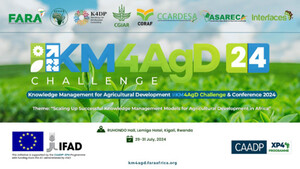
Knowledge, perceptions, and practices around zoonotic diseases among actors in the livestock trade in the Lake Victoria crescent ecosystem in East Africa
Abstract
Background: Zoonotic diseases such as anthrax, rabies, brucellosis, and Rift Valley fever pose a direct threat to health and undercut livelihoods in the communities in which they occur. A combination of anthropogenic and animal activities like migration and interaction with wildlife and their respective parasites and vectors drives the emergence and re-emergence of zoonotic diseases. Consequently, One Health interdisciplinary approaches that incorporate social scientists can provide key insights into complex local perceptions. The approach calls for collaboration between the human and animal health sectors, including the sharing of disease surveillance data necessary to alleviate disease impacts. Livestock traders interact closely with livestock, which puts them at elevated risk of infection and creates conditions by which they may spread zoonotic disease. It is thus essential to examine practices among actors involved in the livestock trade to understand the most appropriate ways to mitigate these risks.
Methods: A qualitative study was conducted among the actors in the livestock trade in Busia County on their knowledge and perceptions of zoonotic diseases and practices that may contribute to the spread, control, and prevention of zoonotic disease transmission. A thematic analysis framework was used to categorize and synthesize data from in-depth interviews (IDIs), key informant interviews (KIIs), and structured observations.
Results: Whereas participants could list livestock diseases, they could not identify which ones were zoonoses, demonstrating insufficient knowledge of zoonosis. They identify sick animals by checking for dropped ears, excess mucus production, diarrhea, bloody urinal discharge, and general animal activity levels. To prevent the spread of these diseases, they wash their animals, isolate sick animals from the rest of the stock, and vaccinate their animals. They seek help from animal health professionals for sick animals as part of curative practices. This shows that they perceive the diseases as serious and that they need to be attended to by professionals. The results also show that they perceive animals from outside the region to be more vulnerable to diseases compared to those from within. The actors in the livestock trade engage in practices like skinning dead animals before burying them; to them, this is a normal practice. Some also consume dead carcasses. These increase the risk of zoonotic disease transmission.
Conclusion: The actors involved in the livestock trade are critical in the prevention and elimination of zoonotic diseases; hence, they need to be involved when developing intervention programs and policies for animal health extension services. Training them as a continuum of animal health workers blends lay and professional knowledge, which, alongside their intense contact with large numbers of animals, becomes a critical disease surveillance tool. Increasing awareness of zoonoses by using multi-disciplinary teams with social scientists is urgently needed so that practices like skinning dead animals before disposing of them and consumption of dead carcasses can be minimized.
Citation
Majiwa, H., Bukachi, S.A., Omia, D. and Fèvre, E.M. 2024. Knowledge, perceptions, and practices around zoonotic diseases among actors in the livestock trade in the Lake Victoria crescent ecosystem in East Africa. <i>Frontiers in Public Health</i> 11: 1199664.










